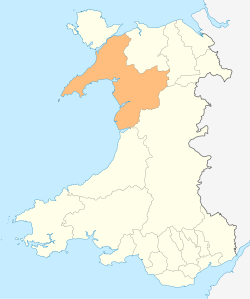Penmaenpool
| |
|---|---|
 Penmaenpool with Cader Idris in the background | |
Location within Gwynedd | |
| OS grid reference | SH693184 |
| Community | |
| Principal area | |
| Country | Wales |
| Sovereign state | United Kingdom |
| Post town | DOLGELLAU |
| Postcode district | LL40 |
| Dialling code | 01341 |
| Police | North Wales |
| Fire | North Wales |
| Ambulance | Welsh |
| UK Parliament | |
| Senedd Cymru – Welsh Parliament | |
Penmaenpool (Welsh : Llynpenmaen) is a hamlet on the south side of the estuary of the River Mawddach in Wales, near Dolgellau. A Grade II listed toll bridge provides access across the estuary for light vehicles.



